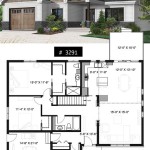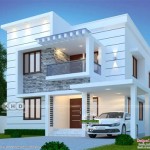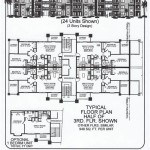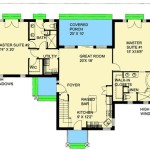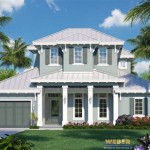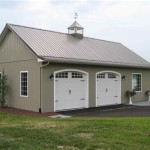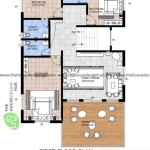Small House Designs and Plans: Maximizing Space and Efficiency
The escalating costs of land and construction, coupled with a growing awareness of environmental impact, have fueled the popularity of small house designs. These homes, typically ranging from under 1,000 square feet to even smaller "tiny homes," prioritize efficient space utilization, affordability, and sustainable living. This article explores various aspects of small house designs and plans, highlighting key considerations and strategies for creating functional and aesthetically pleasing small homes.
Understanding the Appeal of Small House Living
The attraction to small house living extends beyond mere financial considerations. For many, it represents a deliberate lifestyle choice emphasizing minimalism, reduced environmental footprint, and increased financial freedom. A smaller home requires less maintenance, consumes fewer resources for heating and cooling, and generally encourages a more intentional approach to ownership. Downsizing can also simplify daily life, allowing occupants to focus on experiences and relationships rather than the burdens of managing a large property. This growing movement reflects a shift away from consumerism and towards a more simplified and fulfilling existence.
Furthermore, small homes offer a unique opportunity for creative design and personalization. Constraints in space often necessitate innovative solutions and thoughtful consideration of every detail. This process can lead to highly customized living spaces that perfectly cater to the specific needs and preferences of the occupants. The focus shifts from acquiring more “stuff” to curating a collection of meaningful possessions that enhance the living experience.
The architectural flexibility inherent in smaller structures also creates opportunities for unique and environmentally conscious designs. Small homes can be easily adapted to utilize sustainable materials, passive solar heating, and rainwater harvesting systems, contributing to a reduced environmental impact.
Key Design Considerations for Small Homes
Designing a small house requires a strategic approach that prioritizes space efficiency and functionality. Every square foot must be carefully considered, and multiple-use spaces should be incorporated whenever possible. Several key design considerations are crucial for maximizing the usability and comfort of a small home.
Open Floor Plans: Open floor plans are a staple in small house design, creating a sense of spaciousness by eliminating unnecessary walls and partitions. Combining the living room, dining area, and kitchen into a single contiguous space allows for better natural light penetration and facilitates easier movement throughout the home. The strategic use of furniture and area rugs can define distinct zones within the open space without compromising the overall feeling of openness.
Vertical Space Utilization: Capitalizing on vertical space is essential in small homes. High ceilings, strategically placed lofts, and built-in shelving can significantly expand storage capacity and create visually interesting architectural elements. Lofts can serve as sleeping areas, home offices, or additional storage spaces, effectively doubling the usable square footage. Vertical shelving units and cabinetry can maximize storage without encroaching on valuable floor space.
Multi-Functional Furniture: Furniture that serves multiple purposes is indispensable in small homes. Sofa beds, foldable tables, and storage ottomans are just a few examples of how furniture can be designed to maximize functionality. Built-in seating with integrated storage and Murphy beds are also popular choices for creating flexible and adaptable living spaces. Choosing furniture with clean lines and simple designs can further contribute to a sense of order and spaciousness.
Natural Light and Ventilation: Adequate natural light and ventilation are crucial for creating a comfortable and inviting living environment in a small home. Large windows, skylights, and strategically placed doors can maximize sunlight penetration and promote airflow. Natural light can make a small space feel larger and more open, while good ventilation helps to prevent moisture buildup and improve air quality. The orientation of the house on the lot should also be considered to optimize solar gain in the winter and minimize overheating in the summer.
Storage Solutions: Creative storage solutions are essential for keeping a small home organized and clutter-free. Built-in storage units, under-bed storage, and wall-mounted shelves can maximize storage capacity without taking up valuable floor space. Utilizing every nook and cranny for storage is a key strategy in small house design. Regular decluttering and minimalist principles are also important for maintaining a sense of order and spaciousness.
Exploring Different Small House Design Styles
Small house designs encompass a wide range of architectural styles, each with its unique aesthetic and functional characteristics. The choice of style often depends on personal preferences, site conditions, and budget considerations. Some popular small house design styles include:
Modern Minimalist: Characterized by clean lines, simple forms, and a focus on functionality, modern minimalist small houses emphasize open spaces and natural light. These designs often incorporate sustainable materials and energy-efficient technologies. The emphasis is on creating a streamlined and uncluttered living environment.
Cottage Style: Cottage-style small houses exude charm and coziness with their pitched roofs, dormer windows, and inviting porches. These designs often incorporate natural materials such as wood and stone, creating a rustic and welcoming atmosphere. Cottage-style homes typically feature smaller rooms and a more traditional layout.
Tiny House on Wheels: These portable homes offer the ultimate in flexibility and freedom. Tiny houses on wheels are typically built on trailers and can be easily moved from one location to another. These homes often incorporate innovative space-saving features and sustainable technologies.
Container Homes: Constructed from recycled shipping containers, container homes offer a unique and eco-friendly housing solution. These homes can be easily customized and stacked to create multi-story structures. Container homes are often used for off-grid living and sustainable housing developments.
Accessory Dwelling Units (ADUs): ADUs are small, independent living units located on the same property as a single-family home. These units can be used as rental properties, guest houses, or in-law suites. ADUs offer a flexible and affordable housing option for homeowners.
Understanding Small House Plans and Construction
Developing detailed plans is a critical step in the small house construction process. These plans should include all the necessary information for obtaining building permits, securing financing, and guiding the construction process. A comprehensive set of small house plans typically includes:
Floor Plans: Floor plans illustrate the layout of the house, including the dimensions of each room, the location of doors and windows, and the placement of fixtures and appliances. Accurate floor plans are essential for visualizing the flow of the space and ensuring that all the necessary elements are included.
Elevations: Elevations provide a view of the exterior of the house from all sides. These drawings show the rooflines, the placement of windows and doors, and the overall architectural style of the house. Elevations are important for visualizing the finished product and ensuring that the design is aesthetically pleasing.
Sections: Sections are cutaway views that show the interior construction details of the house. These drawings illustrate the framing, insulation, and other structural elements of the building. Sections are essential for understanding the construction process and ensuring that the house is built to code.
Electrical and Plumbing Plans: Electrical and plumbing plans show the location of all the electrical outlets, switches, and light fixtures, as well as the location of all the plumbing pipes, fixtures, and appliances. These plans are essential for ensuring that the electrical and plumbing systems are installed correctly and safely.
Foundation Plans: Foundation plans show the dimensions and specifications of the foundation, including the type of foundation, the depth of the footings, and the location of any structural supports. A well-designed foundation is crucial for ensuring the stability and longevity of the house.
The construction of a small house can be approached in a variety of ways, depending on the homeowner's skill level, budget, and time constraints. Some homeowners choose to build their own small houses, while others hire a general contractor to oversee the entire construction process. Prefabricated small house kits are also available, offering a convenient and cost-effective alternative to traditional construction methods. Regardless of the approach, careful planning and attention to detail are essential for ensuring a successful outcome.

Small House Designs Shd 2024001 Pinoy Eplans

Small House Plan Examples

59 Small House Design Ideas Plans

Small House Design With Floor Plan 6 X M

18 Small House Designs With Floor Plans And Decors

Small House Design 7x7 With 2 Bedrooms Plans 3d

10 Best Small House Plan From Tm Designs

Small House Design Plans 5x7 With One Bedroom Shed Roof Tiny

Unique Small House Plan Id12209 Floor Plans By Maramani

Small House Plans With S Houseplans Blog Com


